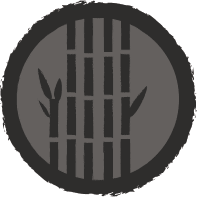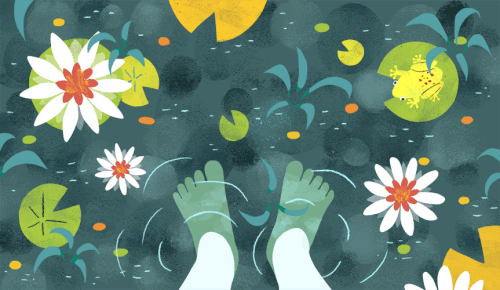181338
[ il pal, il sam, sam pal ]
The Yeoldu (The Twelve)
"The Yeoldu," Namjoon wrote the word on the board, too. "Or, The Twelve. A loose but very powerful organization of South Korea's most eminent families. Together, they control the Seoul underground while maintaining legal personas above ground. They have links to the media, the police, the state. Everywhere, basically."
"So, like, the Korean Mafia?" JK asked.
"More like an oligarchy," Namjoon shrugged. "Ten of them have been around since the Joseon dynasty, and took their family emblems from the Shipjang-saengdo , or the Ten Symbols of Longevity, signifying their long and infinite reign over Seoul and South Korea. They operate on loyalty and competition. The money helps, of course."
The Yeoldu (The Twelve)
[hae/sun]
Field: Publishing and Media
The sun is identified with longevity because it rises in the sky each day, without fail. The sun and moon represent the complementary yet opposing forces of yang and yin, which animate the cosmos in East Asian philosophy. The sun is pure yang, the male principle of the universe that is light and active and generates life.
Image and Text Source
[daenamu/bamboo]
Field: Education
Bamboo is one of the most versatile and abundant materials in East Asia, eaten by both humans and animals and used to make everything from houses to paper. It remains green throughout the four seasons and therefore symbolizes long life. Because it bends rather than breaks, bamboo also represents resilience, and its simple shape, humility. According to Confucian ideology, bamboo possesses the qualities of a great scholar: humility, uprightness, flexibility of mind, and grace.
Image and Text Source

[dol/rock]
Field: Car Manufacturing
Rocks, stone, minerals and jewels are the hardest and most enduring things in nature.
Image Source
Text Source

[san/mountain]
Field: Military
Mountains and rocks keep their shape forever. The breathing of mountains is believed to activate the universe. They are the abode of Eight Daoist Immortals and on them are said to grow the mushrooms of immortality. In Korea and China, important state rituals were conducted in the mountains, and the dominant mountain peak became the emblem of the emperor.
Image and Text Source

[su/water]
Field: Steel Manufacturing
An almost universal symbol of life, fruitfulness, and abundance, water is linked to longevity across time. In Daoist philosophy, water is one of the five eternal elements—together with earth, fire, metal, and wood—that make up the cosmos. A section of the important Daoist text Dao De Jing reads, “Nothing under heaven is softer or more yielding than water; but when it attacks things hard and resistant there is not one of them that can prevail.”
Image and Text Source

[gureum/cloud]
Field: Chemical Manufacturing
As producers of rain, clouds sustain long life. In their swirling forms they contain the Daoist qi (chee), or breath of life. When their vapors gather around the mountaintops, they represent the uniting of yin and yang, soft and hard, changeability and permanence. The shape of clouds in some Joseon dynasty paintings, resembles the form of the mushroom of immortality, reinforcing their connection to longevity.
Image and Text Source
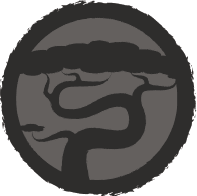
[so-namu/pine tree]
Field: Casinos and gambling
The pine tree is one of the most common symbols of longevity in East Asia. Because it remains green even in the harshest winters, it stands for resilience, endurance, and strength against adversity. Its gnarled bark was thought to resemble an old man’s skin. A fourth-century Daoist text suggests that drinking the resin of a thousand-year-old pine will enable one to “live as long as the sun and the moon.” The pine tree, bamboo, and plum tree are known as the Three Friends of Winter because they are evergreens.
Image and Text Source
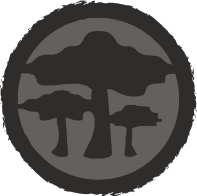
[bullcho/lingzhi mushroom]
Field: Medicine
The sacred, cloud-shaped lingzhi mushroom grants immortality to those who eat it. This mushroom springs from the roots of trees that grow high in the mountains where the Daoist immortals live. According to legend, it can be found only by a deer, crane, or phoenix.
Image and Text Source

[geobuk/turtle]
Field: Mining
Turtles are noted for their long life span. In addition, with their dome-shaped upper shell, flat lower shell, and legs in the four corners of their bodies, they were early emblems of the universe and the cardinal directions. In Korean mythology, the turtle is a messenger of good news in water, its counterpart being the tiger, the messenger in the mountains. In this screen, streams of breath emanate from the turtles’ mouths, perhaps delivering their sacred messages.
Image and Text Source

[baek-hak/white crane]
Field: Telecommunications
Cranes live a long time, some species as long as eighty years. In some Asian folktales they are said to live as long as five hundred years. Cranes mate for life, and therefore symbolize harmony, a wish for a long marriage, and respect for one’s parents and ancestors. Cranes also signify promotion at court, as they appear in the rank badge of Joseon civil officials. In Daoism the crane symbolizes transcendence and serves as a means of transport to heaven.
Image and Text Source

[saseum/deer]
Field: Fashion and Retail
Nibbling as they do on forest vegetation, deer are believed to have a special talent for sniffing out the elusive mushroom of immortality that grows high in the mountains. They are frequently shown as the companion of Shou Lao, the Daoist god of longevity. Ground horn of deer has long been used for medicinal purposes in East Asia and is believed to promote health and long life. White Deer Lake on JeJu Island in Korea was said to be the place where immortals came “to bathe and drink in the milk of the white deer.”
Image and Text Source
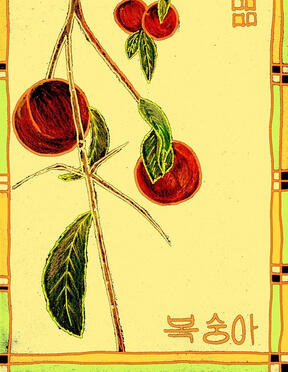
[bogsung-a/peach]
Field: Entertainment
Chinese Daoism prominently features “the Peaches of Immortality”, supposedly grown in a mystical orchard hidden in the mountains to the west of historical China by a powerful goddess, as a symbol of long life and the attainment of spiritual immortality. The story goes that eating just one of these will transform a person into a Daoist Sage with everlasting life or at least centuries of healthy longevity, like one of the popular “Eight Immortals”. One of its most commonly seen folk-deities, the “God of Longevity” (often depicted in a triad with companion gods of Prosperity and Happiness), is always shown holding a large such peach.
Image Source
Text Source

